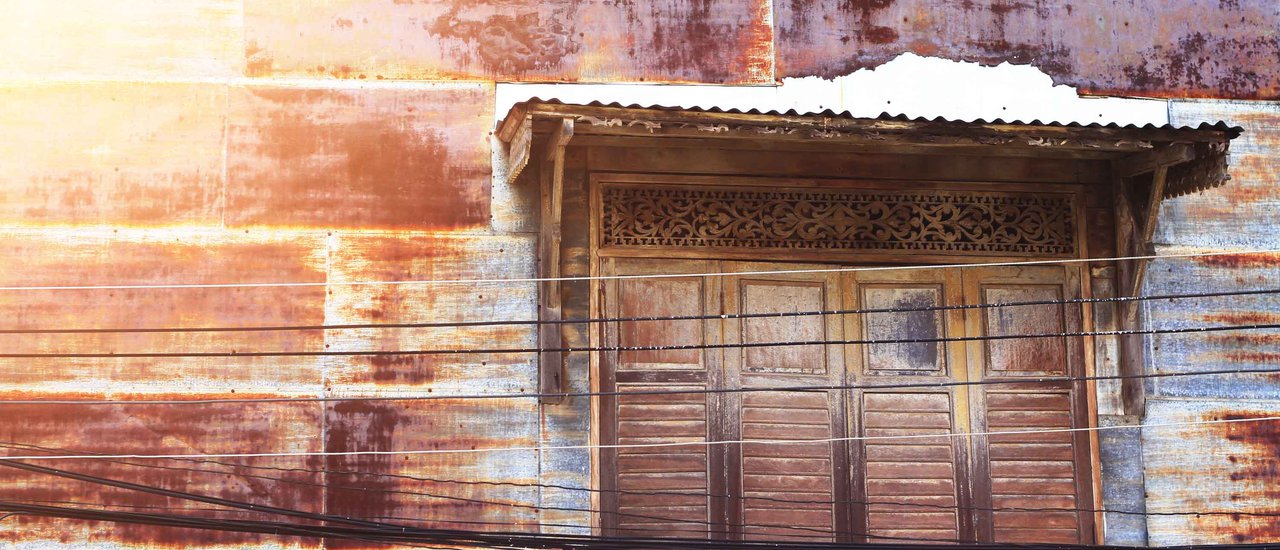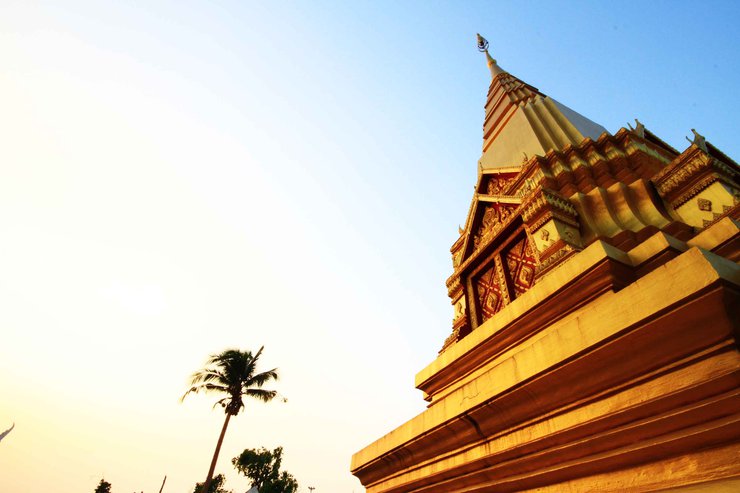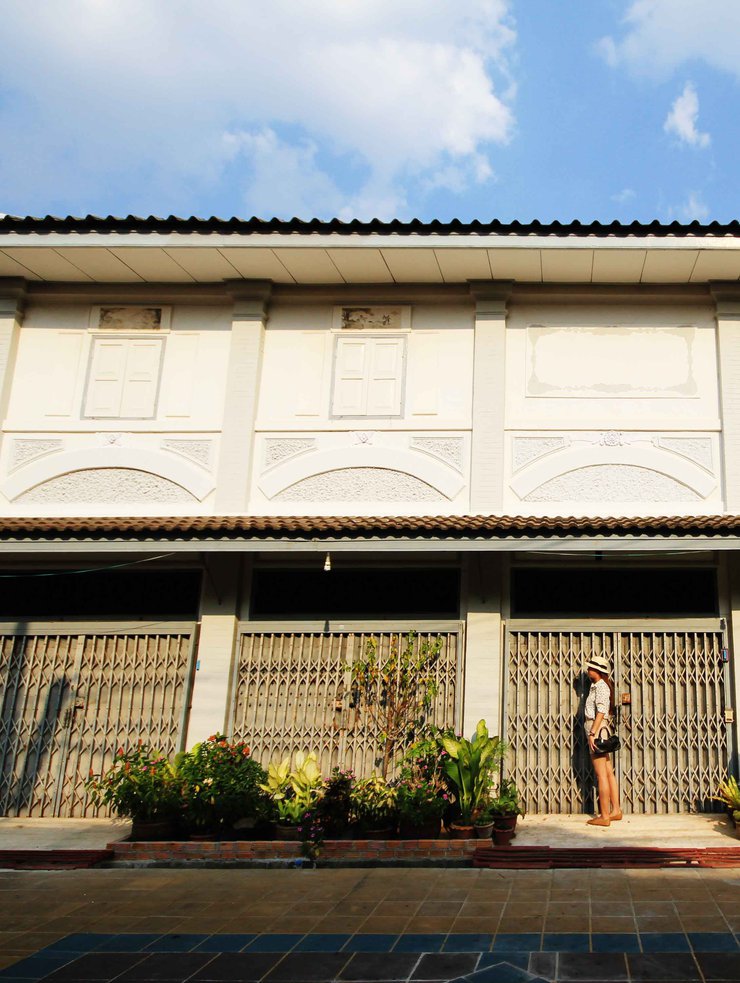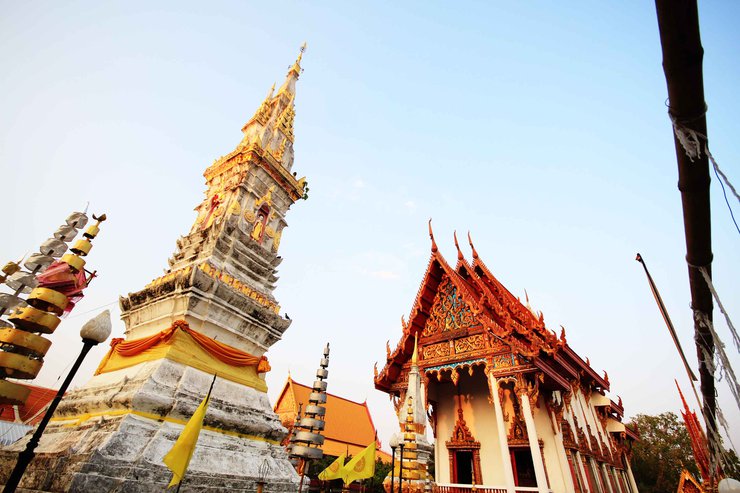
Have you visited all 77 provinces in Thailand yet?
I believe that many people have not yet visited all the provinces. Those who like the sea, mountains, waterfalls, or whatever, tend to go only to the places they are familiar with, which is not surprising. However, Thailand still has many interesting things to offer. Therefore, I would like to recommend and not want you to miss one tourist destination that many people may overlook and have never been to, which is "Yasothon".

Yasothon, a province in the northeastern region of Thailand, is renowned for its grand Bun Bang Fai (Rocket Festival) held during the sixth lunar month, the largest of its kind in the country. However, beyond this spectacle, the provincial capital harbors a hidden gem known as "Ban Sing Tha," a charming village that embodies the essence of local life.

This community is quite old. If we include the current year, 2559 BE (2016 CE), Ban Sing Tha will be 195 years old. This dates back to the era when France colonized Laos and the Mekong River territories on the left bank, which borders Thailand's Isan region. Western culture gradually entered through the Mekong and Chi rivers of the Ban Sing Tha community, brought by Chinese merchants.

The fusion of Chinese and Western cultures in architecture gave rise to the "Sino-Portuguese" style. "Sino" derives from "China," while "Portuguese" originates from "Portugal," a European power known for its colonial expansion. The strategic location of Ban Sing Tha, situated on the bend of the Chi River, made it an ideal port for cargo ships. Consequently, the houses and shophouses in this area exhibit a distinct Sino-Portuguese architectural style.



Nearly two centuries have passed, and the Ban Sing Tha community has become even more charming, like stepping back in time with a time machine. The most striking feature is the row of five dark brown shophouses next to Wat Sing Tha. In the past, it was a Chinese opium den called "Smoke Station," which later became "Samakkha Station." Today, it is a popular hangout spot for both locals and tourists. All the alleys and nooks are still interconnected. Many of the wooden houses have beautiful lattice windows with wooden fretwork. Some are antique wooden shophouses with a mixture of plaster and brick walls. These walls are made of fired bricks plastered with a mixture of laterite soil and rubber. Laterite soil is a testament to the wisdom of Ban Sing Tha. It is made from a mixture of soil, straw, cow and buffalo dung, resulting in a highly viscous and flexible soil that is resistant to all weather conditions, does not crack, and is very lightweight. Today, it has become a premium material for building earthen houses, as you can see.





A Tapestry of Tradition and Modernity: Exploring the Cultural Landscape of Ban Sing Tha
The community of Ban Sing Tha in Thailand presents a fascinating blend of historical significance and contemporary life. At its heart lies the "Shrine of the City Pillar," a magnificent example of Chinese architecture standing amidst three prominent Thai temples: Wat Maha That, Wat Si Thammaram, and Wat Sing Tha.
Wat Maha That, a temple deeply intertwined with the town's history, houses the revered Phra That Anan, containing the relics of the Buddha's disciple, Ananda. Wat Si Thammaram, a royal temple, graces the banks of the Chi River, while Wat Sing Tha, established alongside the community itself, adds another layer to the rich tapestry of the town's heritage.
The presence of a rare "Isan-style stupa" further underscores the unique cultural landscape of Ban Sing Tha. This architectural gem, alongside the harmonious coexistence of Chinese and Thai religious structures, speaks volumes about the community's ability to embrace diversity and weave it into the fabric of its identity.
In essence, Ban Sing Tha offers a glimpse into a world where the echoes of the past resonate with the vibrancy of the present, creating a dynamic and captivating experience for visitors and residents alike.

The compact size of Ban Sing Tha community allows for a leisurely stroll, immersing oneself in the atmosphere of a bygone era and its simple way of life. The lush greenery along the Chi River contrasts beautifully with the vibrant hues of the houses, creating a visually captivating scene. The colors, ranging from brown, orange, beige, and white, enhance the ambiance and aesthetic appeal of the community.

Usher in the Year of the Monkey with a visit to the classic community of Ban Sing Tha.
--Guaranteed to be unique and heartwarming.


• Yasothon derives from the word "Yotsunthon," meaning "holding high rank." King Rama II bestowed the name, and "Phra Sunthonrachwongsa" served as the city's first ruler. • To visit the "Walking Street Ban Sing Tha," plan your trip for Wednesday.
• In the heart of Yasothon, there are charming cafes like "Lovely Cake" and laid-back restaurants like "Rim Chee Riverside," revealing the city's surprisingly hip and chic character.
• Local specialties include "lod chong" (sweet coconut milk with rice noodles) and "pla som" (fermented fish). These can be found throughout the city.

The route starts on Highway 1 (Phahonyothin Road) to Saraburi, then turns right onto Highway 2 (Mittraphap Road), passing Nakhon Ratchasima, heading towards Phimai District and Ban Phai District, Khon Kaen. Then turn right at Highway 23 heading towards Maha Sarakham, Roi Et, and ending at Yasothon, covering a total distance of approximately 600 km.
• The Green Park Grand 045-714-700 to 04
• JP Emerald 045-724-848 to 55
• Lovely Cake 045-714-822
• Rim Chi Riverside 045-714-597
• Yasothon Provincial Cultural Office 045-715-137
• TOT Ubon Ratchathani Office (Ubon Ratchathani, Amnat Charoen, Yasothon) 045-243-770 / 045-250-714
Nuim Navigator
Friday, September 27, 2024 10:26 AM















